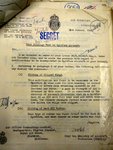Mustang nut
Banned
- 200
- Jun 14, 2011
1. The Spitfire is a beautiful and amazing aircraft but it was out of it's element post D Day.
2. I propose if push come to shove they could have set up a paralell production line in the UK in less then 3 months, most of the jigs and forms could have come over on Ferry Command flights and the heavier equipment on convoy.
1. I agree, but D Day was in 1944 the thread is about mid 1943. There was no shortage of combat aircraft over Normandy and I would say for the requirements of the allies after D Day the Tempest was a better plane.
2 If the British could set up a production line in 3 months why did it take NAA so long in America? Would the people working in UK be from spitfire factories which would cut spitfire production or new labour. How long did the dallas plant take to get operational?
Strapping a bomb under a single engined fighter means it requires an escort itself unless you have eliminated the opposition.
Posted by Dragondog
Well, nearly double the range, faster. Ideal sweep aircraft, armed recce, medium bomber escort to much longer range than Spit. Spit was superior in dogfight in everything except speed and dive..
That is the point I am making it was used by the British for tactical recon but as a medium bomber escort you need the medium bombers for fighter sweep I would say its lack of performance at altitude would be a problem.
The Brits never intended to build Merlin Mustangs, they 'hoped for' delivery but realistically foresaw them going straight to USAAF Strategic Bomber forces.. your statements are all true wrt to 'what did happen' but wasn't 'what if' the the basis of the thread?
I was replying to PBfoots proposition. When the Merlin was first fitted to the Mustang the requirement for long range escort was not forseen. As I said, to start producing Mustangs in the UK with either engine in 1943 the decision would have to be made in 1942. In 1942 the US had no interest in the mustang and no requirement for a long range escort. The "what if" in the thread is mid 1943 at which time the P51B/C had not arrived.
Last edited:

